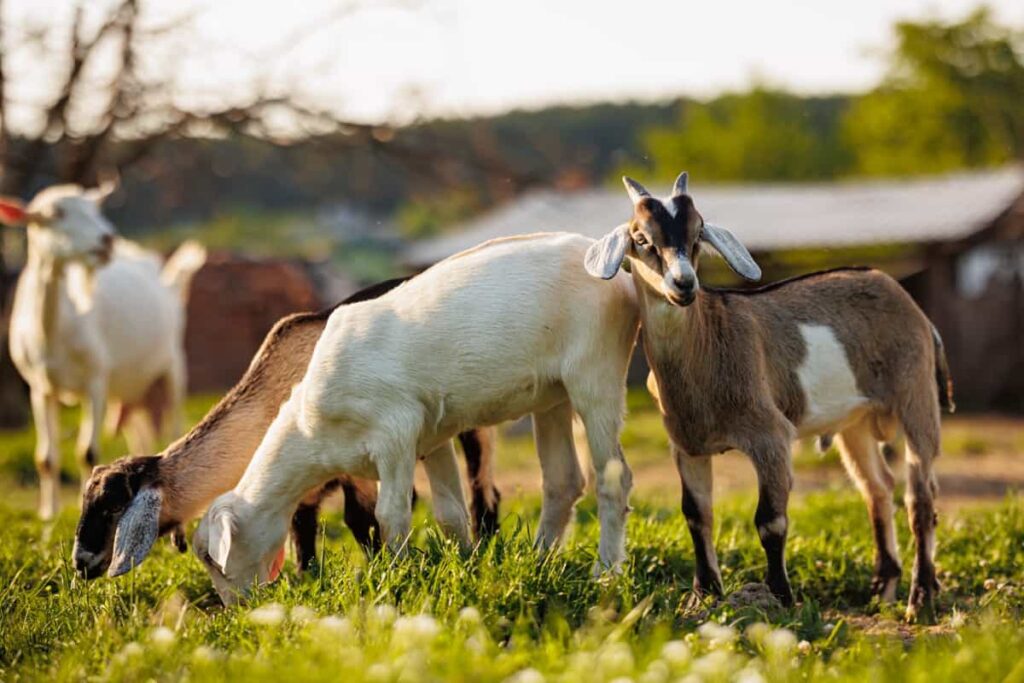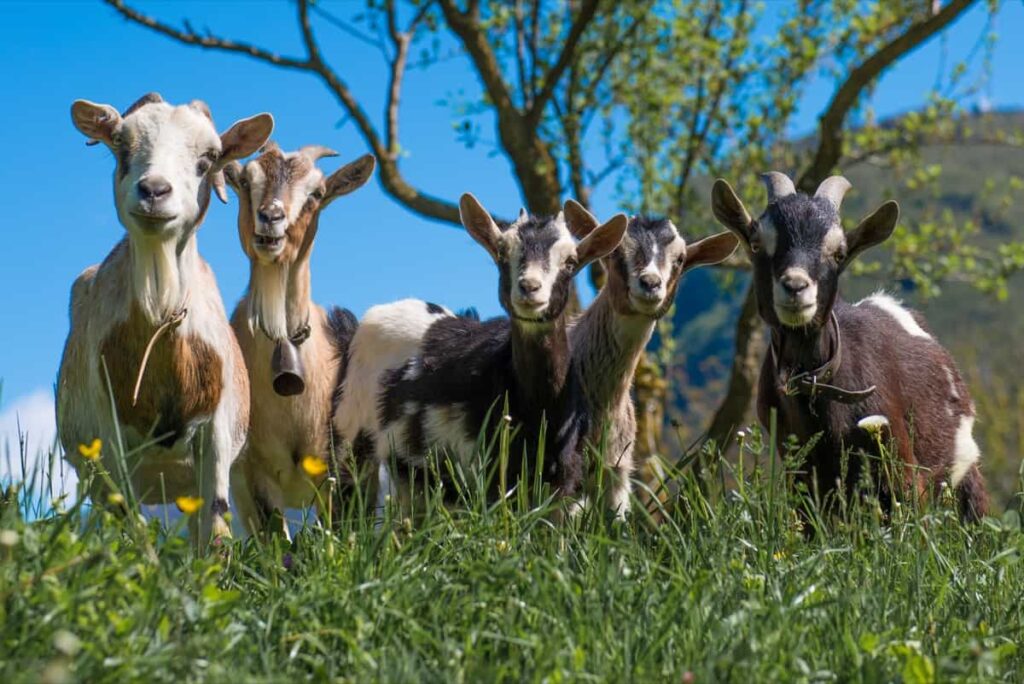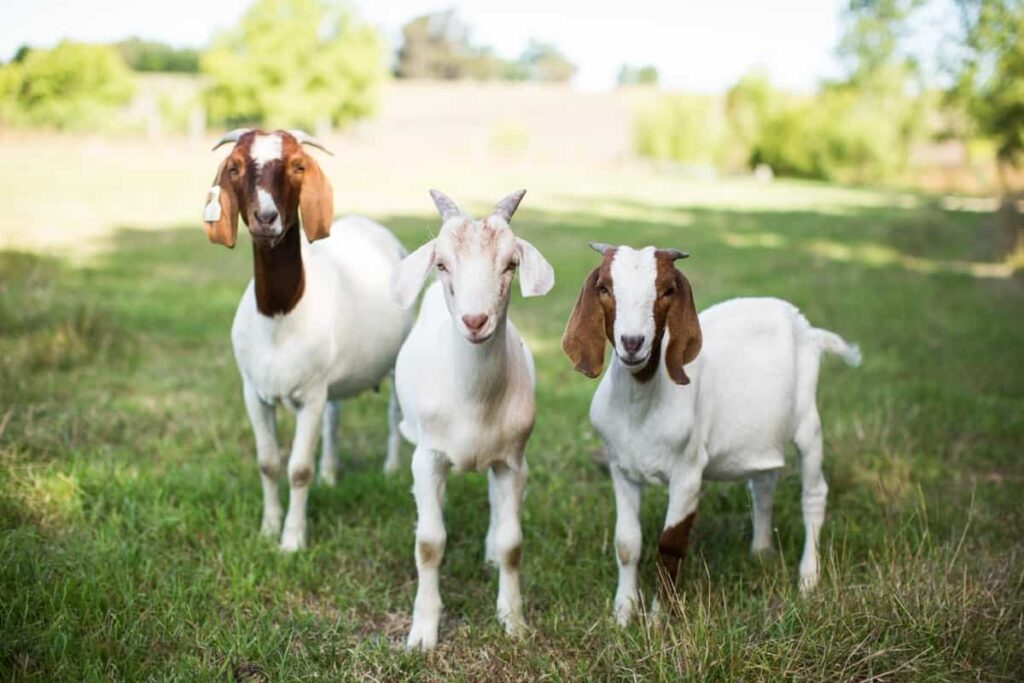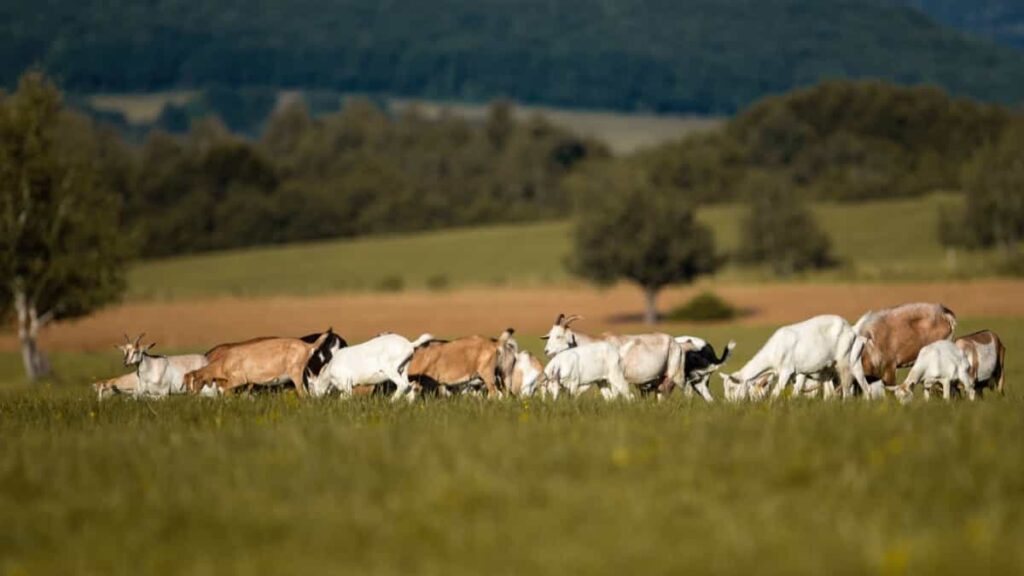Pasture management plays a vital role in ensuring your goats have access to high-quality forage while maintaining the ecological balance of your land. By practicing effective pasture management, you ensure that your goats have access to a diverse range of nutritious plants throughout the year. This enhances their nutrition and promotes better growth, milk production, and reproductive performance.

Pasture Management for Goats
Importance of Pasture Management for Goats
Pasture management for goats is of utmost importance when it comes to these animals’ overall well-being and productivity. By effectively managing their grazing systems and carefully selecting suitable forage, goat owners can ensure optimal nutrition and health for their herd. Proper pasture management ensures that goats have access to high-quality and nutritious forage.
The benefit of pasture management is that it provides a sustainable source of food for goats. By growing healthy and diverse forage grasses and legumes, farmers can provide a varied diet to their goats, meeting their nutritional requirements throughout the year. Furthermore, implementing effective pasture management practices for goats reduces reliance on expensive feed supplements, as goats have access to nutrient-rich pastures year-round. This leads to significant cost savings for goat owners while ensuring their animals receive balanced nutrition naturally.
Implementing Effective Grazing Systems for Goats
It is essential for maintaining their health, maximizing pasture utilization, and promoting sustainable land management practices. Rotational grazing allows the goats to graze on fresh vegetation while giving previously grazed areas time to recover. It helps prevent overgrazing and promotes even manure distribution, improving soil fertility.
In case you missed it: How to Utilize Goats for Pest Control in Agroforestry Systems

Additionally, rotating the goats between paddocks reduces parasite load as they are less likely to re-infect themselves from their droppings. Effectively implementing these grazing systems requires careful monitoring of goat behavior and pasture conditions and adjusting stocking rates accordingly.
Factors to Consider in Forage Selection for Goats
The nutritional content of the forage for goats has specific dietary requirements, so it’s essential to choose a forage that meets their needs. Some forages may be nutritious, but if goats don’t find them tasty, they won’t eat them. It’s essential to offer various options and observe which ones your goats prefer.
The availability of forage is also crucial. Consider what grows well in your region and climate conditions. Native grasses and legumes are often a good choice as they are adapted to local needs. Take into account any potential toxic plants or weeds in the pasture area.
Rotational Grazing: Maximizing Pasture Utilization for Goats
Rotational grazing is a strategic approach to pasture management for goats that involves dividing the grazing area into smaller paddocks and moving goats from one paddock to another regularly. This method not only maximizes the utilization of available forage but also promotes healthier pastures and better overall goat health.
Rotating goats between different paddocks allows for proper rest and regrowth of vegetation in each area. This helps prevent overgrazing and ensures that fresh, nutritious forage is always available for the goats to graze on. Additionally, rotational grazing helps control weeds as the constant movement of goats prevents weed growth from becoming established.
Rotational grazing is an effective way to maximize pasture utilization while promoting sustainable land management practices. By implementing this system, goat owners can ensure their animals have access to high-quality forage throughout the year while maintaining healthy pastures for long-term use.
Strip Grazing: A Strategic Approach to Forage Consumption by Goats
This method allows the goats to graze one strip of pasture at a time while the other sections are rested and allowed to regrow. Farmers can ensure that goats can access fresh and high-quality forage by implementing strip grazing. The goats are moved regularly from one strip to another, preventing them from overgrazing and selectively consuming only their preferred plants.
This approach also promotes better utilization of available forage. The goats are confined to specific areas, so they are encouraged to eat more evenly across the entire pasture. By confining the goats to smaller areas, they can effectively graze down unwanted plants before they can spread and compete with desirable forages.
Managed Intensive Grazing: Optimizing Forage Production and Goat Health
This method involves dividing the pasture into smaller sections, or paddocks, and regularly rotating the goats through them. By allowing the goats to graze in one paddock for a short period before moving them to the next, you can ensure they always access fresh and nutritious forage.
Furthermore, managed intensive grazing helps optimize forage production by stimulating plant growth. When goats graze selectively on certain plants, it encourages those plants to grow stronger and healthier. In addition to improving forage production, this grazing system promotes better goat health.
In case you missed it: Essential Goat Farming Equipment and Tools for Goat Farm Operations

Incorporating Legumes into Pastures for Enhanced Nutrition for Goats
Legumes such as clover, alfalfa, and vetch are high in protein and other essential nutrients that goats need for optimal health and productivity. The main benefit of legumes in goat pastures is their ability to fix nitrogen. This means they can convert nitrogen gas into a form that plants can use, reducing the need for synthetic fertilizers.
When selecting legume species for goat pastures, it’s essential to consider their adaptability to your specific climate and soil conditions. Some legumes may perform better in certain regions than others. It’s also crucial to choose varieties that are not toxic to goats. The presence of legumes in goat pastures improves nutrition and helps control weeds. Legume plants outcompete weeds due to their vigorous growth habits and dense canopy cover.
Balancing Forage Quality and Quantity in Goat Pastures
Goats are known for being selective eaters, often preferring high-quality plants over low-quality ones. However, they also need sufficient forage to meet their nutritional needs. To achieve this balance, it’s essential to understand the nutritional requirements of goats and the characteristics of different types of forage. High-quality forage should be rich in protein and energy, providing goats with the nutrients they need to thrive. On the other hand, having an abundance of low-quality forage may lead to nutrient deficiencies and reduced productivity.
Monitoring pasture conditions regularly can help you determine if adjustments are needed in terms of grazing intensity or supplemental feeding. Balancing forage quality and quantity requires careful management of animal needs and pasture conditions.
Managing Weeds and Parasites in Goat Pastures
Maintaining a healthy pasture for goats involves providing nutritious forage and managing weeds and parasites. Regularly monitoring your pastures is crucial to identifying and controlling weeds before they become widespread. Implementing mowing, hand-pulling, or targeted herbicide application can help keep weed populations in check.
Parasites, like internal worms, are common in grazing animals like goats. They can lead to weight loss, anemia, diarrhea, and even death if not properly managed. Rotational grazing systems can help break the parasite lifecycle by regularly moving goats to fresh pastures.
Monitoring and Evaluating Pasture Health for Sustainable Goat Grazing
The main aspect of monitoring pasture health is observing the vegetation. Assessing the density, height, and diversity of forage plants can indicate whether the goats adequately utilize the available resources or if overgrazing occurs. Additionally, monitoring weed encroachment helps identify areas that may require intervention.
Examining soil composition and fertility levels provides insights into nutrient availability and overall pasture productivity. Water availability should also be monitored closely. Checking water quality regularly guarantees that it meets or exceeds standards to prevent any negative impact on goat health.
Frequently Asked Questions about Pasture Management for Goats
How Does Rotational Grazing Work?
Rotational grazing involves dividing the pasture into smaller paddocks and periodically rotating the goats through them. This allows forage to regrow while preventing overgrazing in one area.
In case you missed it: 10 Best Herbal Remedies for Goat Deworming

How Does Pasture Management Benefit Goats?
Effective pasture management offers numerous benefits to goats. It helps maintain proper body condition and weight gain, reduces the risk of digestive disorders, minimizes parasite infestations, enhances immune function, and promotes optimal milk production.
Should I Supplement the Pasture with Additional Feed?
In most cases, well-managed pastures should provide sufficient nutrition for your goats. However, when grass growth may be limited or if you have lactating does or growing kids with higher nutritional needs, supplementation with hay or grain may be necessary.
How Often Should I Rotate My Goats on Pasture?
Rotational grazing is highly recommended to maintain healthy pastures and minimize parasite loads in the soil. Aim for a two to three-day rotation or even daily rotation if possible.
How Do I Manage Parasites in The Pasture?
Regular deworming is essential for parasite control in goats; however, it’s also important to implement strategic grazing practices such as using taller paddocks or resting pastures periodically to break the parasite lifecycle.
Conclusion
Pasture management is a strategic approach to growing healthy forage grasses and legumes that provide a sustainable food source for your goats while also improving the ecological health of the soil. A well-managed pasture provides numerous benefits for both the goats and the environment. It also involves careful selection of suitable forage options for your goat herd.
- Types of Grass Growing for Goat Farm
- How to Train Goats for Milking: A Beginners Guide
- Goat Milking Practices and Equipment: A Beginner’s Guide
- Goat Farming for Fiber: Producing Mohair and Cashmere
- Maximizing Goat Milk Production: Tips for Dairy Goat Farmers
- Goat Farming as a Family Business: Strategies for Success
- Profitable Kenya Goat Breeds for Commercial Dairy and Meat Business
- Unlock the Secrets of Oberhasli Goat: Discover Raising and Management Practices
- Ultimate Guide to Myotonic Goats: Explore Profile to Raising